The capital of the province of West Flanders is also one of the most popular tourist destinations in Belgium. Hoards of tourists from the United States to Japan line up to visit the picturesque medieval city center of this fascinating place.
Located in the utmost western part of the country, Bruges gained influence during the Middle Ages as one of the most important commercial hubs in Europe. Most of the most famous landmarks in the city were constructed during the city’s heyday between the 12th and 15th centuries.
The Golden Era of Bruges ended when the so-called Golden Inlet between the city and the North Sea dried up. This resulted in Antwerp taking over the position of Bruges as the main port city in the country and Brussels as the most important city.
This all changed again when rich British and French tourists “rediscovered” this magical place in the 19th century, resulting in a booming tourist industry that still attracts millions of visitors every year.
Let’s take a closer look at some of the most famous buildings in Bruges, some of the most popular attractions in the so-called “Venice of the North.”
1. Basilica of the Holy Blood
The Basilica of the Holy Blood is a minor Roman Catholic basilica and is located on one of the city’s main squares called “De Burg.” It’s here that the Counts of Flanders lived during the Middle Ages.
One of these counts named Thierry of Alsace commissioned the construction of the church. It was built during the 12th century and the lower chapel is still the original structure from this period.
The upper chapel was built during the 15th century in the Gothic style and underwent multiple renovations since, including during the 19th century.
The upper chapel is the location of one of the most fascinating relics in Christianity, a piece of cloth that presumably contains the blood of Jesus Christ himself.
Official website: Holy Blood

2. Markt of Bruges
The “Markt” is the main market square in the city of Bruges and just like the famous Grand Place in Brussels, it is lined with historic structures. Some of the most notable Gothic buildings are the Belfry of Bruges and the West Flanders Provincial Court Building.
While the Belfry of Bruges dates back to the rich medieval period of the city, the original medieval court building and a later Neoclassical building ended up being demolished and were replaced with the Neo-Gothic building you can see today in 1887.
The square was completely renovated in 1995 and is lined with bars and restaurants that allow you to relax in the medieval heart of the city. The square is also for the most part traffic-free, making it easy to walk towards the statue of Flemish revolutionaries Jan Breydel and Pieter de Coninck in the center.

3. Canals of Bruges
Even though Bruges is often referred to as the Venice of the North, it’s not the only city in northern Europe that is called this way. Amsterdam in the Netherlands, Stockholm in Sweden, and even Saint Petersburg in Russia are referred to as such as well (to name just a few).
The reason is the interconnected canals that flow through the heart of the city as if they were its veins. The fact that Bruges is full of medieval buildings makes going on a boat trip on the Canals of bridges one of the best ways to discover the most famous buildings in Bruges.
You can expect to see medieval façades of buildings, romantic bridges, and even secret gardens of the houses that line the canals. You’ll also discover one of the most iconic views in the city referred to as the “Rozenhoedkaai,” the perfect place to take a picture.

4. Church of our Lady
The tallest building in the city is the brick tower of one of the most amazing cathedrals you’ll ever come across. The Church of Our Lady in Bruges was built during the 13th, 14th, and 15th centuries and exemplifies the glory of the city during this period.
The tower of the church reaches a height of 115.6 meters (379 feet), a height that still makes it the 3rd-tallest brickwork tower in the world today. The marvelous Gothic Cathedral featured a wide variety of Gothic elements such as spires and flying buttresses.
While the exterior of the church is most definitely worth checking out, the interior holds one of the most amazing treasures in Belgium. The Madonna of Bruges was carved by Italian polymath Michelangelo in the early 16th century and was the only sculpture that left Italy during his lifetime.
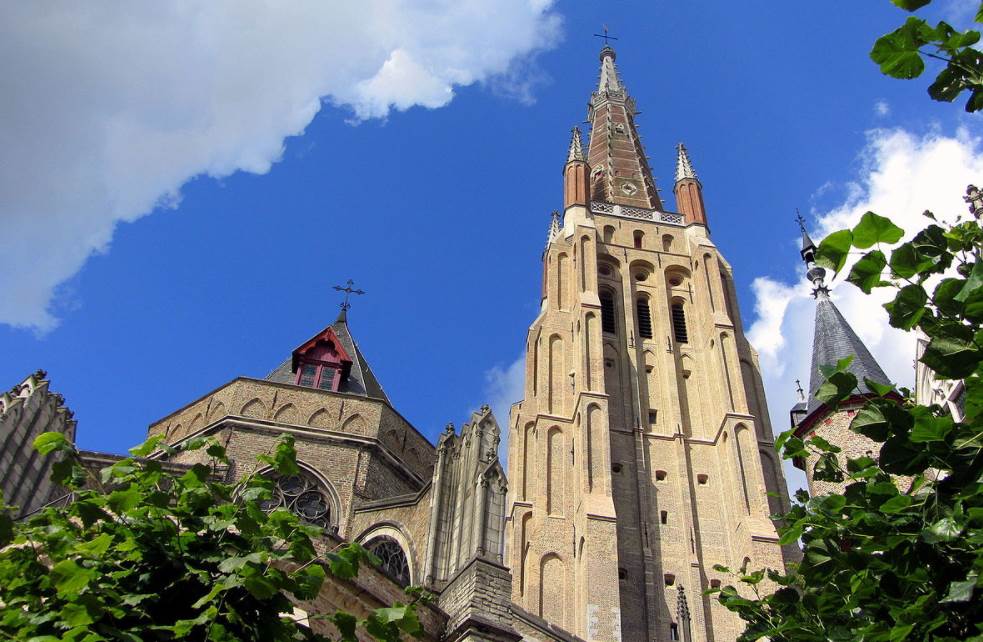
5. Belfry of Bruges
When you walked down the market of Bruges it’s impossible not to notice the tall medieval tower flanking it. This structure is referred to as the Belfry of Bruges and is one of the most fascinating bell towers in the world.
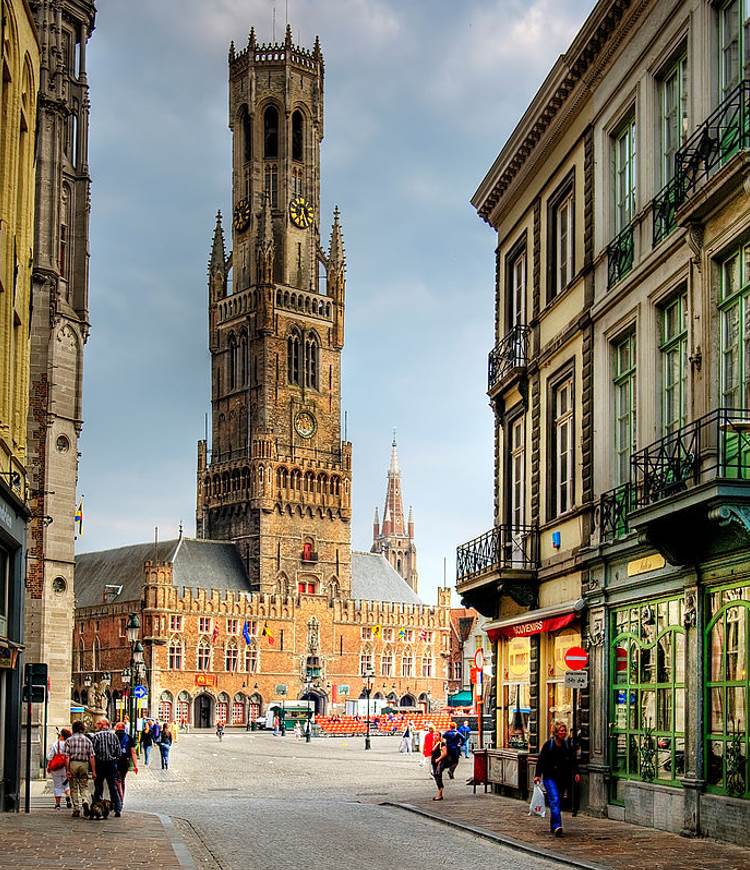
It’s one of the ultimate symbols of the city and is another structure that was built during the city’s wealthy medieval period and was used as the city’s archives and a lookout tower to spot fires. Ironically, even though the original version of the tower was built around 1240, it had to be replaced by a new structure in the late 13th century following a fire.
The upper octagonal tower of the Belfry of Bruges was built between 1483 and 1487. It was originally topped by a wooden cross but this has been lost, meaning that the tower was originally taller before the final time it was destroyed by yet another fire in 1741.
6. Bonifacius Bridge
We already mentioned the multiple romantic bridges you’ll come across during a boat ride on the Canals of Bruges, so let’s check out one of the most romantic of the famous bridges in Bruges, the Bonifacius Bridge.
This particular bridge is located in the vicinity of the majestic Cathedral of Our lady and is surrounded by medieval structures overhanging the small canal that it crosses. This sense of magic pretty much up the city and this makes walking across this bridge one of the best things to do in Bruges.
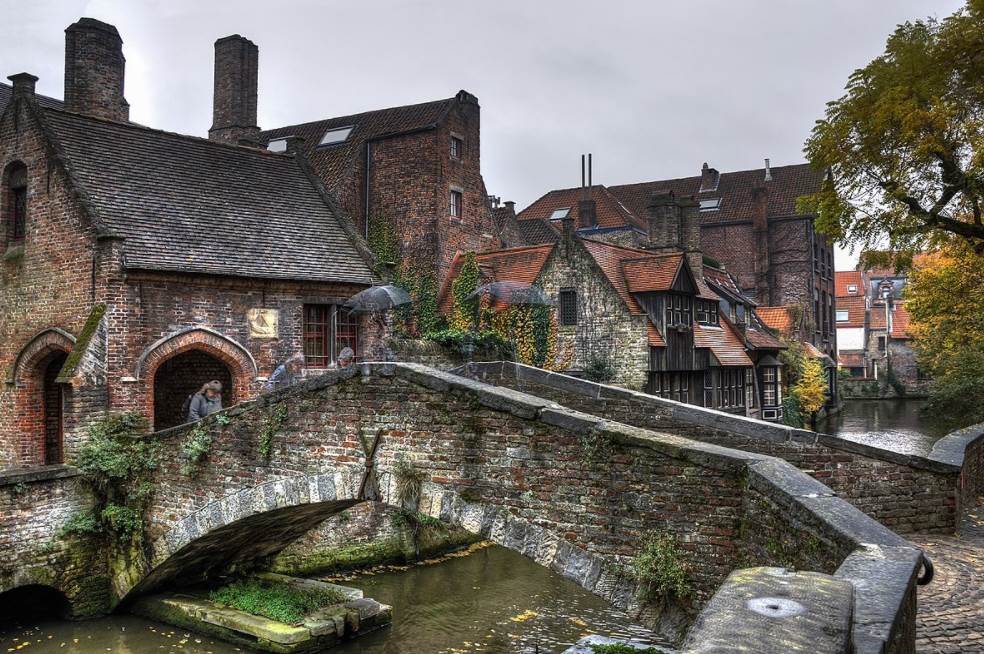
To make the story even more remarkable, this is one of the youngest bridges in the city as well, dating back to the early 20th century. This is fascinating because it perfectly blends in with the structures surrounding it which are hundreds of years old.
7. Bruges City hall
The Burg Square, the location of the Basilica of the Holy Blood, is actually where you can find the City Hall of Bruges. Built during the 14th and 15th centuries, it’s one of the oldest city halls in the entire region that was referred to back then as the Burgundian Netherlands.
The remarkable architecture of this building also had a great influence as it became the inspiration for multiple other elaborately decorated city halls in Belgium, including those of the cities of Brussels, Ghent, Leuven, and Oudenaarde.

The building is another example of the great influence that the city of Bruges had during the Middle Ages, both politically and economically. It’s estimated that the city back then already had a population of up to 45,000 inhabitants, including thousands of foreign merchants.
8. Groeninge Museum
The Groeninge Museum is located on a spot that was once occupied by a relatively large abbey called the “Eekhout Abbey.” This structure was demolished in the 19th century except for the monumental entrance gate.
This gate now provides access to a museum of fine art that features a collection of Flemish and Belgian painters who were active over 6 centuries, including Renaissance and Baroque masters up until Surrealist artists René Magritte.
The most famous works in the collection are 3 works by Early Netherlandish painters and one of the most renowned of the so-called “Flemish Primitives,” Jan van Eyck. He has 3 works on display here and the level of detail included in these nearly 600-year-old paintings is quite simply incredible.
Official website: Groeninge Museum
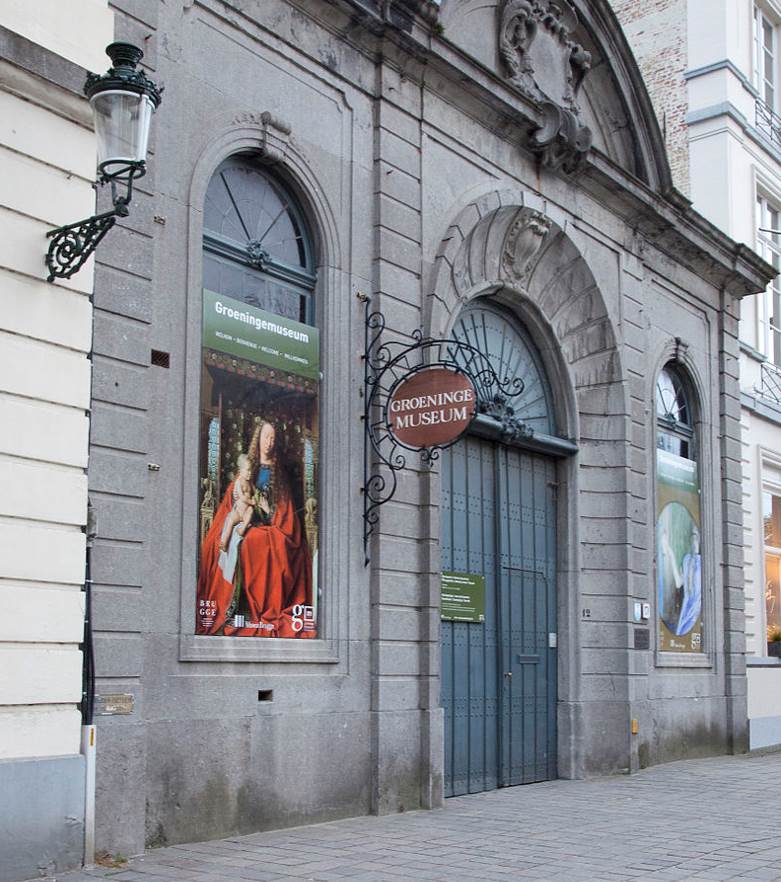
9. Gruuthusemuseum
Another interesting museum in Bruges is housed in a medieval mansion called the Gruuthuse, named after “Louis de Gruuthuse,” one of the Counts of Flanders during the 15th century who lived here.
What’s remarkable about this museum is that it both serves as a museum featuring exhibits dating between the 15th and 19th centuries, and a medieval “house museum.”
This means that the exterior is set up in such a way that it looks pretty much as it would have done while people were living here during the Middle Ages. In a medieval city, visiting the interior of a medieval house is one of the best things to do in bridges, that’s for sure.
Official website: Gruuthusemuseum
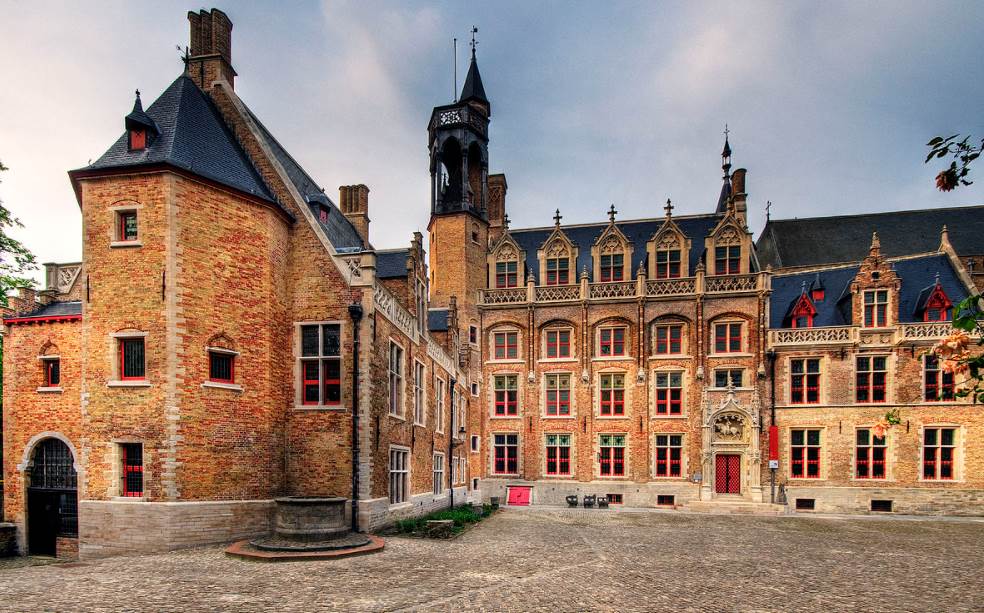
10. Huisbrouwerij De Halve Maan
Even though the Bruges Beer Experience teaches you how beer is produced, there’s nothing like learning about the process than visiting an actual brewery. The Huisbrouwerij “De halve Maan” is the most renowned brewery in Bruges, a building in the heart of the city.
This brewery not only produces the beer that is considered to be the “city beer” called “Brugse Zot” (“Crazy Bruges”), but also other famous beers such as “Straffe Hendrik” and “Brugs Tarwebier,” a white version of the regular blond beer.
The brewery has been producing beer for approximately 500 years and has been located in its current location since 1856. The brewery has a visitor center and obviously, this includes the opportunity to taste some of the excellent beers!
Official website: Halve Maan
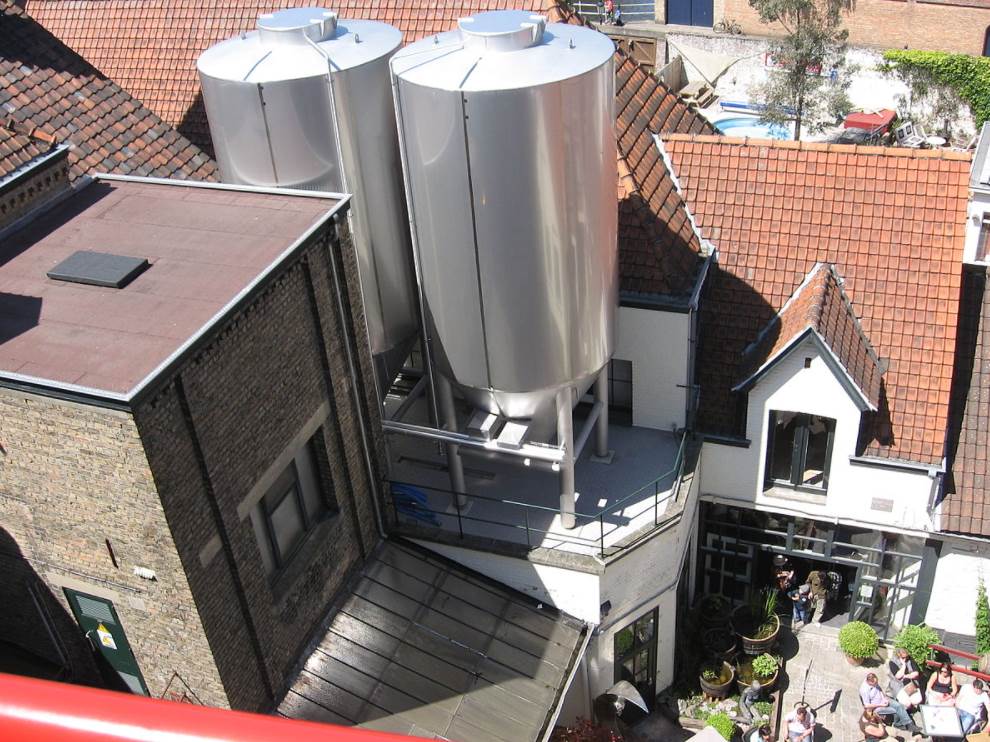
11. Sint-Salvatorskathedraal
Even though the most prominent church in Bruges is the Gothic Church of Our Lady, it’s not the city’s main cathedral. This honor is reserved for the Saint-Salvator Cathedral, a church that was originally built in the 10th century.
Even though the church didn’t suffer any structural damage since its completion in the 13th century, the church did undergo some serious renovations, most notable following in the aftermath of the French Revolution in the 19th century.
One of the main reasons to visit the church is the artwork that is kept inside of it. This ranges from little medieval statues to monumental Renaissance paintings. The collection also includes magnificent tapestries created in the 17th and 18th centuries depicting various scenes of the life of Jesus Christ.
Official website: Sint-Salvatorkathedraal

12. Jan Van Eyck Square
If you have visited the Groeninge Museum then you have surely seen the incredible talent of Flemish painter Jan van Eyck (1390-1441). He was working as a court painter during his years in Bruges in the 15th century, working for Philip the Good, the Duke of Burgundy at the time.
Today, his achievements in the world of art have been commemorated with the award of his square in the center of Bruges. This was one of the busiest places in the city during his time, a cosmopolitan location in one of the most important cities of medieval Europe.
Just like any other location in the city, this picturesque spot offers you views of both the Canals of Bruges and historic buildings. The center of the square is decorated with a statue of the Flemish artist as well.


